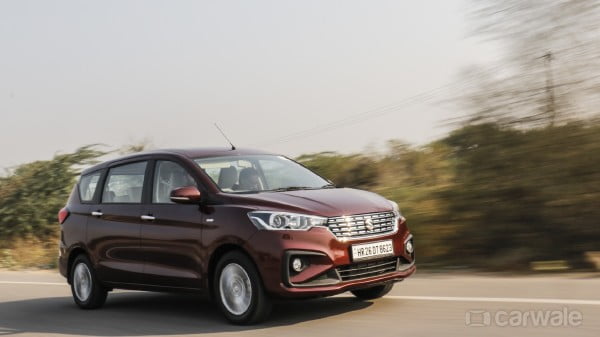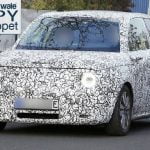What is it?
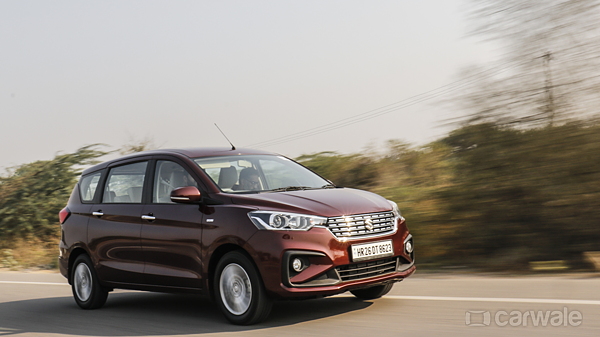
The Ertiga has been yet another success story for Maruti Suzuki. In the six years of its existence, Maruti has sold over four lakh units of the Ertiga, thereby making it one of the most popular MPVs along with the mighty Toyota Innova. We just reviewed the petrol version (click here to read the review) of the car and came away impressed. Will we have the same view of the diesel variant? Read-on to find out.
Based on the Heartect platform which also underpins the Baleno and the Swift, the new Ertiga, despite being much bigger, is around 20kg lighter. Unlike the old car that looked staid and boring, the new Ertiga looks much more stylish and premium. The front grille with splashes of chrome looks upmarket and the swept back projector headlamps look stylish. Even the chiseled front bumper with the boomerang shaped elements around the fog lamps help it look modern. But it’s in the silhouette where the new Ertiga has really grown thanks to the longer dimensions. The silhouette is quite attractive thanks to the larger wheels, the floating roof design and the two prominent creases running across the doors. The rear though isn’t really to our tastes as it looks like a mashup of the old Ertiga and the Ciaz sedan (the prominent boot-line and the tail-lamp design reminds you of the Ciaz).

How is it on the inside?
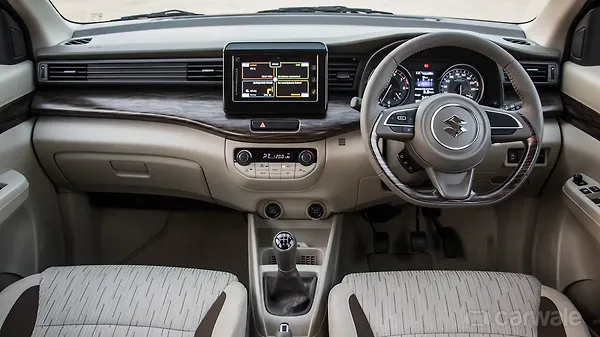
Like the exterior, the cabin is all-new and a pleasant place to be in. The dual tone dashboard looks uncluttered and the faux wood inserts on the dashboard looks convincing enough and gives it an upmarket feel. The ZXi+ variant which we had on the drive gets the familiar touchscreen system as on other Maruti cars, which now looks a bit old as compared to systems from Hyundai’s, Volkswagen’s and Ford’s. It does get all the bells and whistles like Apple CarPlay and Android Auto and it can play music through a USB, Aux-in and SD card ports. Overall, the quality and interior ambience has taken a huge jump over the old car and the choice of colours and materials gets our thumbs-up too. As compared to the old car, the features list hasn’t really seen a big step-up. So you get all the essentials like automatic climate control, touchscreen infotainment system, rear ceiling mounted air-con vents with blower speed control and Dual airbags and ABS is standard across the range. The cabin is very practical too, with two cup holders each for all three rows and big door pockets that can easily accommodate large one litre water bottles. The party trick here though are the front cup-holders that are cooled!
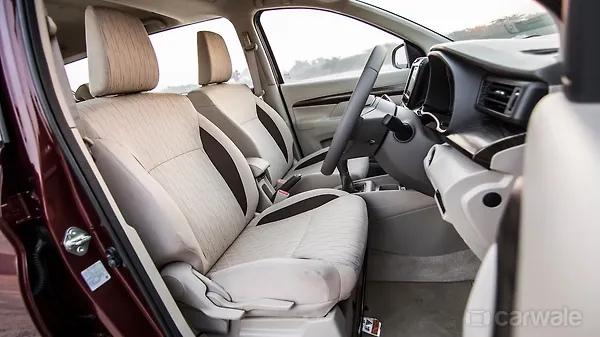
Thanks to the new chassis which is not only lighter but also has a larger footprint, the new Ertiga is much bigger on the inside than the outgoing car. Starting with the front seats that are large and offer excellent support making them comfortable even over long journeys. But it’s in the last two rows where space and comfort has taken a big leap forward as compared to the old car. The middle row is wider, has more knee room and the higher placed bench gives you good amount of thigh support. The wider cabin also makes seating three people abreast much more comfortable. Moving to the third-row, getting in and out is made easier thanks to the one-touch sliding and folding second-row. Even that massive rear door helps ingress hugely. The third-row too is much more accommodating than before thanks to better kneeroom and headroom. The high placed seat also gives you decent thigh support. Thanks to the huge glass area, the Ertiga’s cabin feels airy and the occupants will never feel claustrophobic even when they sit in the last row. Of course, the Ertiga isn’t as spacious as full sized MPVs like the Mahindra Marazzo or the Toyota Innova. Yet thanks to the sliding middle-row, the Ertiga can take seven people in decent comfort and for a family with not many tall members, this MPV will do just fine. What adds to the comfort is the reclining third-row. As we drove the car in Delhi, where temperatures were hovering around 15-18 degrees, we can’t really comment on how effective the air-con is in cooling all three rows.
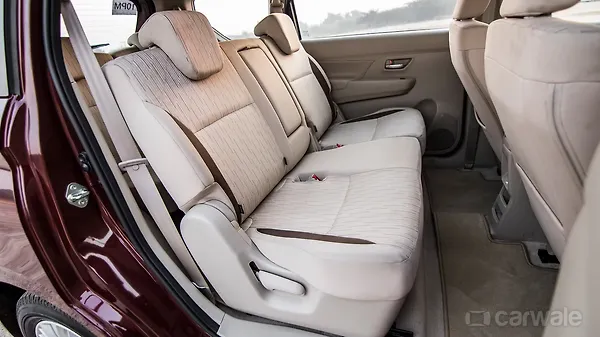
Whereas in the old car, the boot space was next to none with all three-rows up, the car has a deeper bay and can easily take two medium sized suitcases. It also comes with a removable boot cover that can either be neatly stowed away when you need to put big bags or you can put them in place to create a covered compartment. This cover also helps give a flat loading bay when you fold the third-row. When you do fold the third-row, you get a massive 550 litres storage space to put away your luggage or you can increase it to 803-litres by folding the third-row just in case your wife throws you out and you need a bed to sleep.
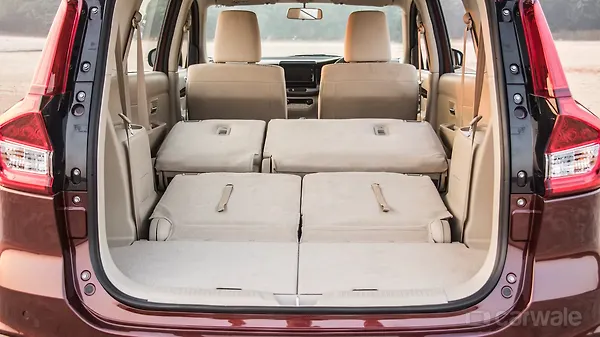
How does it drive?
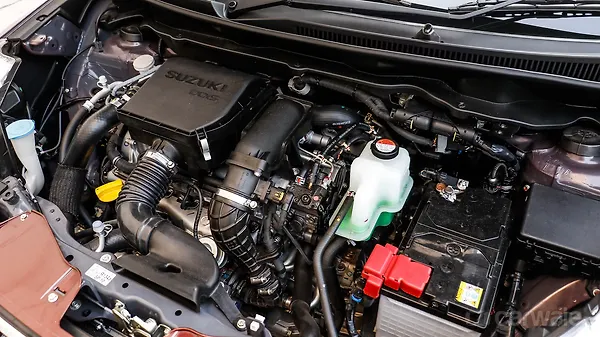
The Ertiga diesel comes with the same 1.3-litre, 88.5bhp Fiat-sourced Multijet engine like the old car. Unlike the petrol version, the diesel car doesn’t get an extra lithium ion battery pack but it does offer start-stop and brake energy regeneration. Press the starter button and the engine settles into an accustomed smooth albeit gravely idle. As explained before, there is initial turbo lag at low revs and you need to constantly shift gears at slow speeds to keep the motor on the boil, which isn’t great when you are driving in bumper to bumper traffic. On the plus side, the gearbox is slick with short throws and the clutch is light and progressive.
Post 2000rpm though, the engine really awakens and the strong mid-range makes driving effortless especially on the highway. The engine feels most comfortable here and relatively smooth at mid-rpms. Past 4000rpm power starts to tail off and there is no point stretching it to its 5200rpm redline, as the motor sounds harsh. This is where rivals from Mahindra, Ford and Renault have an edge as this 1.3-litre engine has started to show its edge especially in terms of refinement.
[“source=cnbc”]



